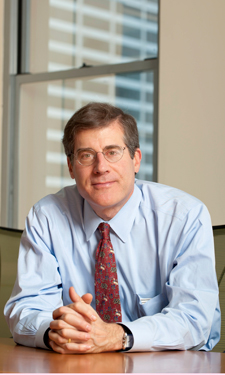 Perhaps best known for leading the acclaimed 1992 effort to revitalize Manhattan’s Bryant Park, Dan Biederman of Biederman Redevelopment Ventures (BRV) hasn’t been resting on his laurels. Since then, he’s organized business partnerships to sustain parks in Boston, Pittsburgh and Dallas, among other cities. Now he’s turned his sights on historic Military Park in nearby Newark, New Jersey.
Perhaps best known for leading the acclaimed 1992 effort to revitalize Manhattan’s Bryant Park, Dan Biederman of Biederman Redevelopment Ventures (BRV) hasn’t been resting on his laurels. Since then, he’s organized business partnerships to sustain parks in Boston, Pittsburgh and Dallas, among other cities. Now he’s turned his sights on historic Military Park in nearby Newark, New Jersey.
In May, the Military Park Partnership broke ground on a multimillion-dollar renovation of the underutilized six-acre downtown park. The project will coincide with construction of the new Prudential world headquarters directly opposite the park, and Prudential is a major supporter of the project. The park also faces the New Jersey Performing Arts Center, built in 1997. Military Park is just one of a number of new or improved amenities for the Newark Downtown District, which also includes a new streetscape and planned hotel. Despite a history dating back to 1667 and an impressive collection of statuary, Military Park gets few visitors today.
“This park has been sitting there idle and not doing anything for the city right between the arena and the New Jersey Performing Arts Center,” Biederman says. “There are really a bunch of things combined that are going to make this area not recognizable to those who went through the bad years there.”
Biederman credits Newark Mayor Cory Booker, philanthropist Ray Chambers and Prudential for jumpstarting the effort. BRV was first brought in to help redevelop the area’s streetscape, and then again for the Military Park renovation.
“As the centerpiece of our downtown, it is vital that we make this oasis of greenery a major part of our city’s transformation,” Mayor Booker says. “I am proud that we have entered a partnership with members of our community to restore Military Park to its deserved glory.”
“The potential is to generate real estate value surrounding the park,” Biederman says. “We took them through every step that made Bryant Park happen, from the founding of the board, to how many people should be on the board, to how often the group should meet, to obviously the substance of the park — what the programming should be, how much do you have to spend on capital improvements — all the lessons we’ve learned in 30 years doing Bryant Park.”
Biederman notes that despite the tough economy, some aspects of this type of project have become easier in the years since Bryant Park.
“I have more credibility because Bryant Park was such a success,” he says. “Where before they used to look at me wide-eyed and say, ‘Who the hell are you to decide you should run this place instead of the public?’ now they just say, ‘The people who did Bryant Park are coming to Newark.’ It was a good reception.”
He also explains that working in Newark is simpler than working in Manhattan because, despite some inherent inertia, people are more willing to let good ideas happen, rather than generating an avalanche of conflicting opinions such as in New York. However, another aspect of New Jersey’s environment has proven to be more of challenge, even with Mayor Booker’s enthusiastic support.
“Every client I ever have tells me their state is the most difficult politically of any state,” Biederman muses. “But in New Jersey, it’s true.”
Biederman doesn’t buy into the argument that public/private partnerships allow local governments to cut back on their funding commitment to parks.
“The truth is, you’re not going to change government’s views about the percentage of their funds that go to parks,” he emphasizes. “Once that number is set by leaders, and private support for parks disappears, they’re not going to say, ‘Now we’ve got to square our shoulders and decide we’re going to put plenty of money into parks because they really deserve it.’ That could be said about any other agency.”
He points out that foundation support is available for parks in underserved neighborhoods and that the money that governments save through private support of higher profile parks is then freed up to use for parks in less-attractive areas. And Biederman is quick to note that his model for park sustainability is not dependent on charity, but built on business deals.
“People tend to get too focused because of the Central Park prominence, and to some extent the High Line, on the fact that philanthropists, like hedge-fund people like Barry Diller, are going to give $10 million each, and that’s something that’s not attainable for public parks in lesser areas,” he says. “That’s not our model. Not only do we not accept money from government, we don’t accept money from private individuals. We only take money from deals that we can arrange where we make a great park and then it’s attractive to sponsors and events and concessionaires. They’re all kept to a discreet level of visibility in the park, but we take from them an eight-figure number to manage the park. That’s a very different model.”
Elizabeth Beard is Managing Editor of Parks & Recreation.

